Art History T1
5.0(1)
5.0(1)
New
Card Sorting
1/72
Earn XP
Description and Tags
Study Analytics
Name | Mastery | Learn | Test | Matching | Spaced |
|---|
No study sessions yet.
73 Terms
1
New cards
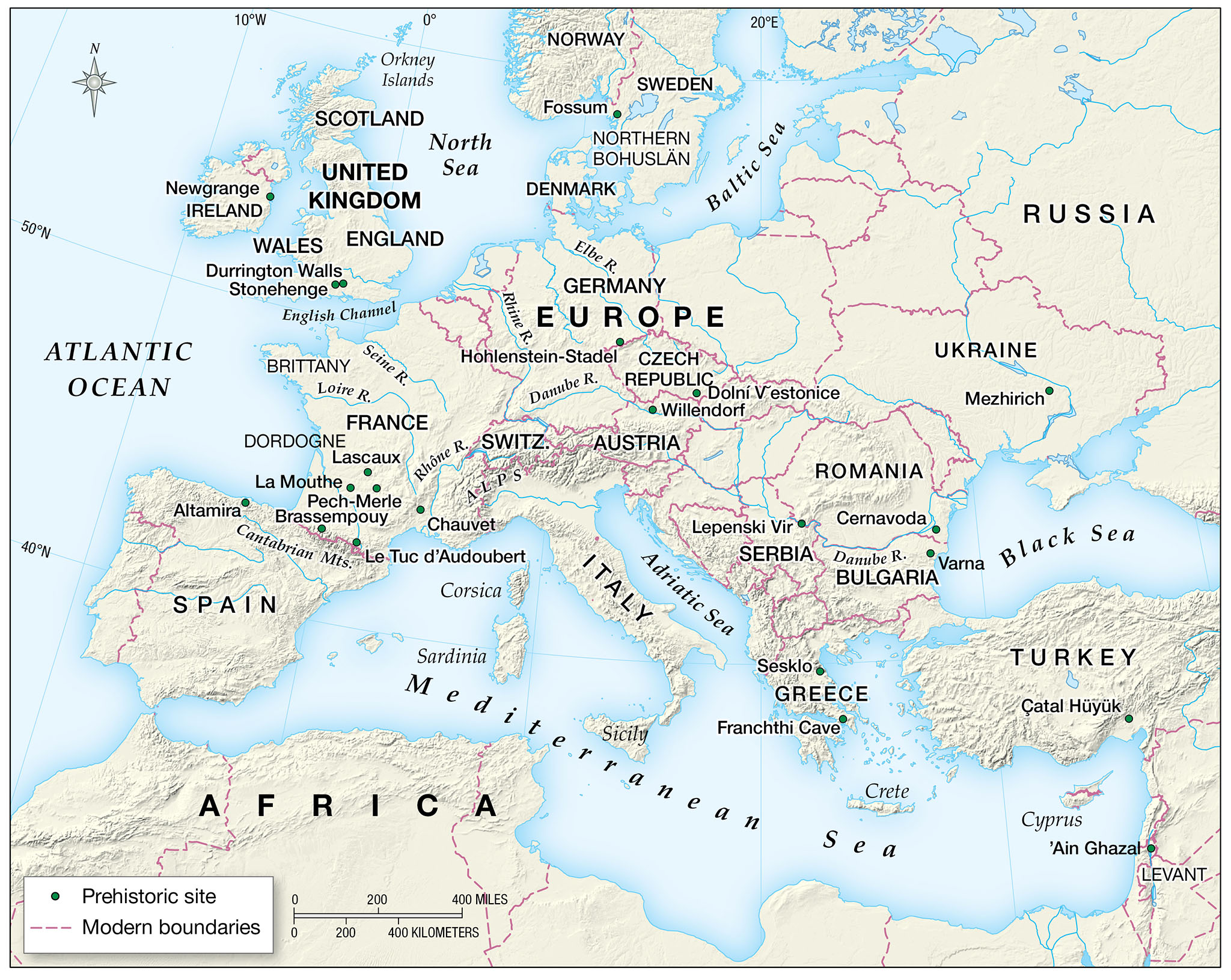
Prehistory
period before systematic writing
2
New cards
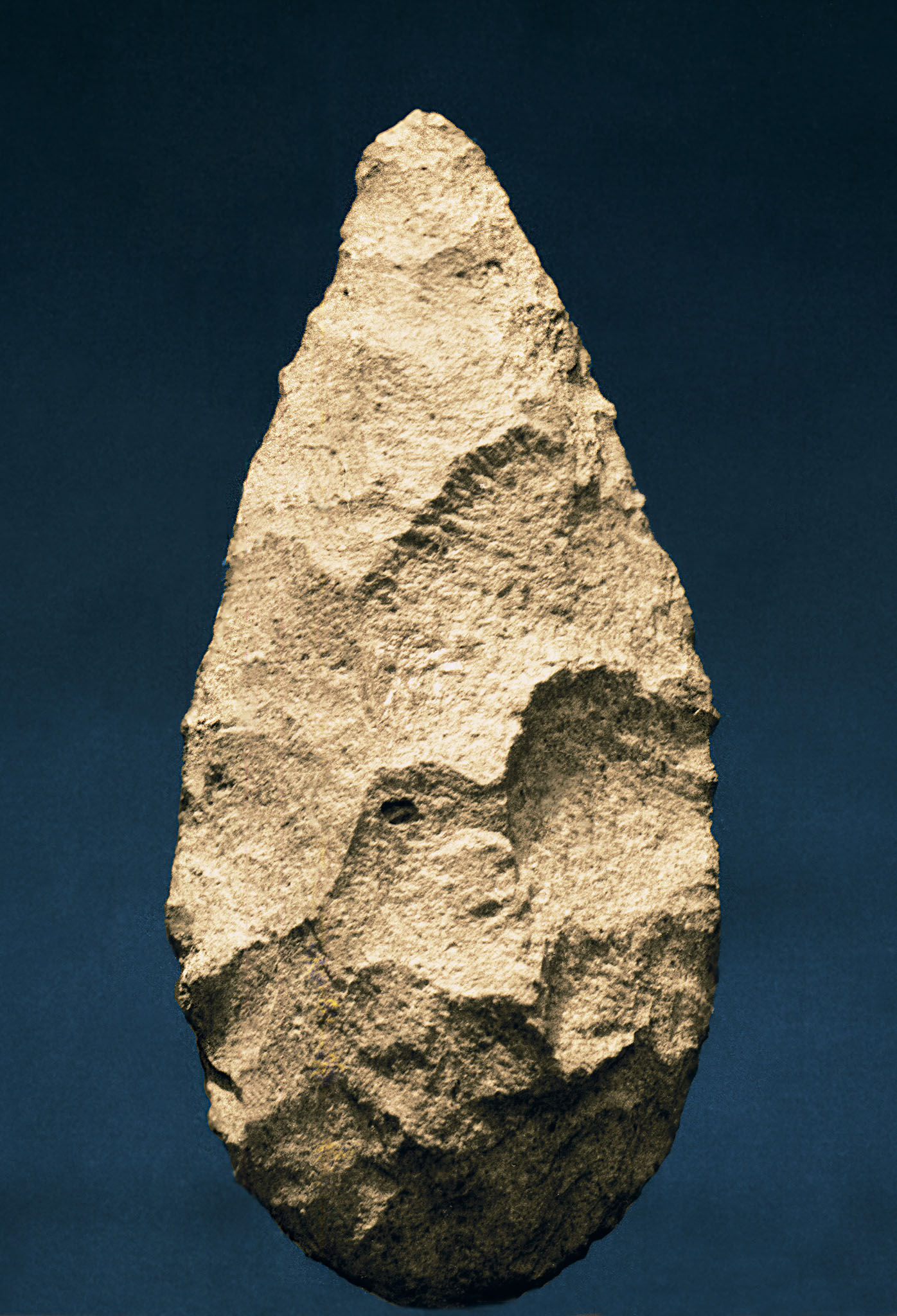
Paleolithic
Ancient Greek "old stone"
3
New cards
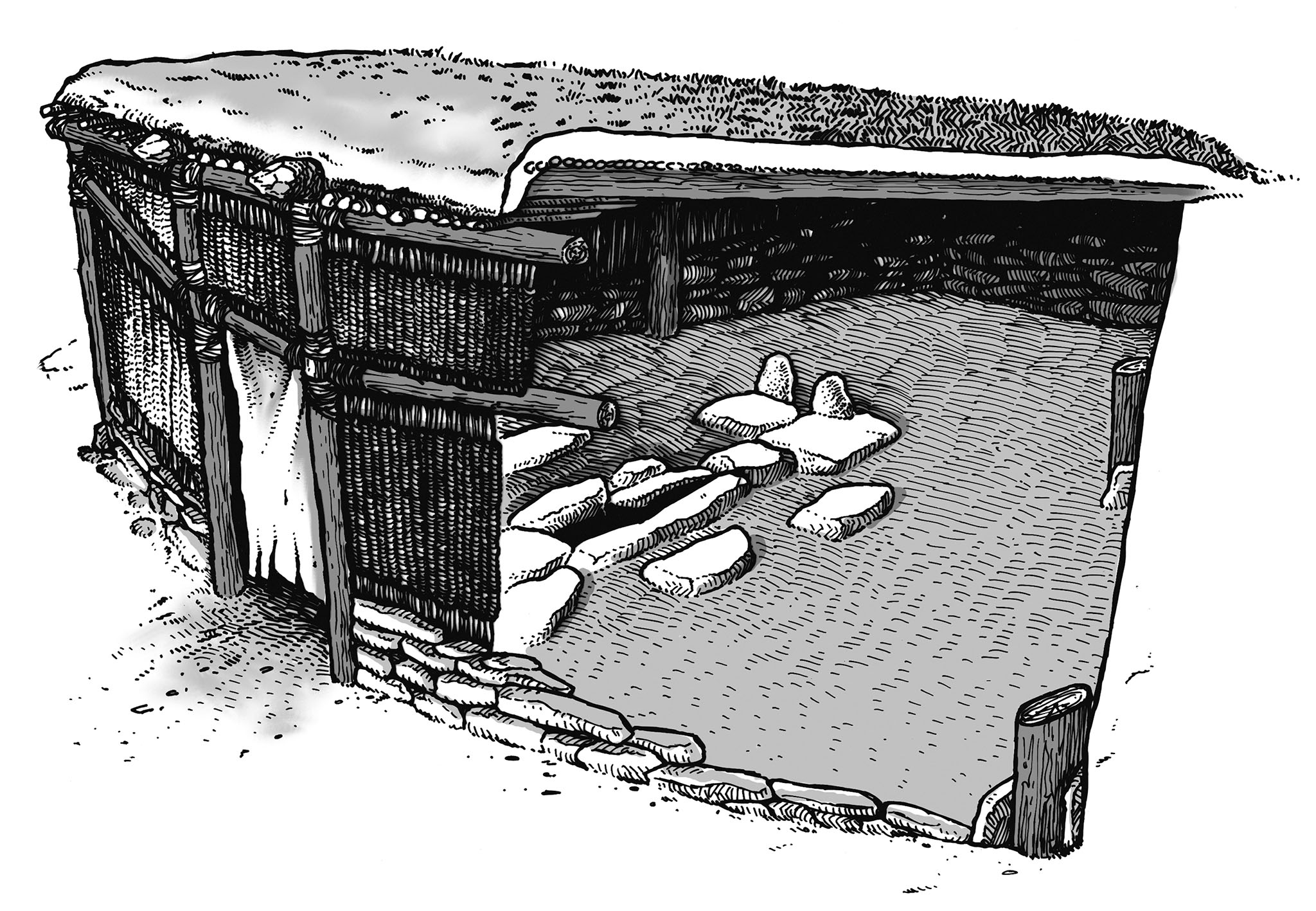
Neolithic
Ancient Greek "new stone"
4
New cards
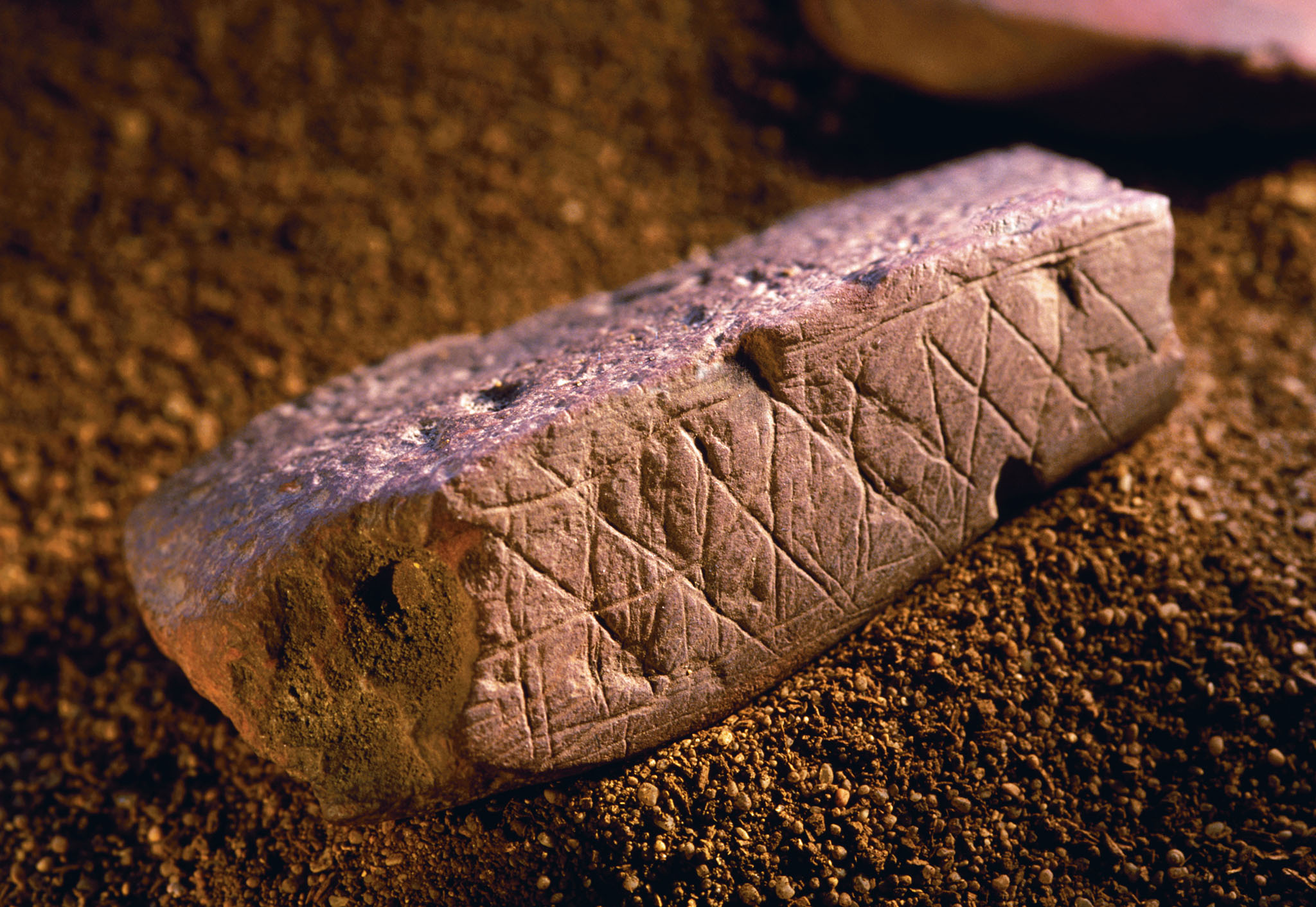
Representational Art
works created by people to "re-present" to other a certain point of view
5
New cards
Incising
A technique in which a design is cut into a hard surface with a sharp instrument.
6
New cards
Pigment
coloring agent derived from naturally occurring organic or mineral material
7
New cards
Polychromatic
a representation that utilizes two or more colors of pigment
8
New cards
Monochromatic
a representation that utilizes only one color of pigment
9
New cards
Silhouette
a representation takes the form of a dark shape against a light background
10
New cards
Perspective
a system for representing three-dimensional space on a two-dimensional surface
11
New cards
Mixed perspective
a convention in art in which every aspect of a body or object is represented from its most characteristic viewpoint
12
New cards
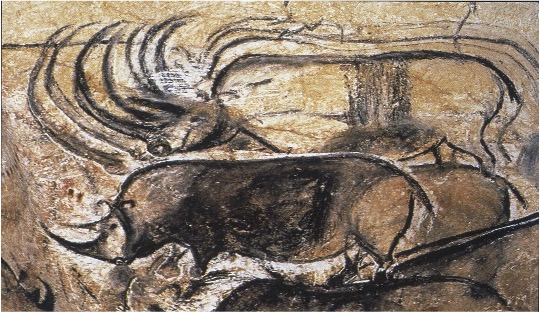
Continuous narrative
artistic convection by which multiple discrete moments in time are represented in the same frame or scene
13
New cards
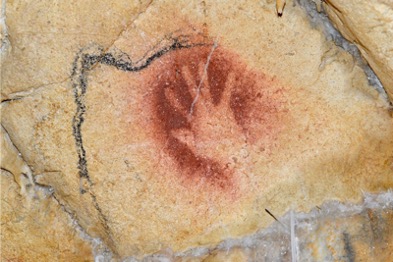
Negative space
the space that surrounds an object
14
New cards
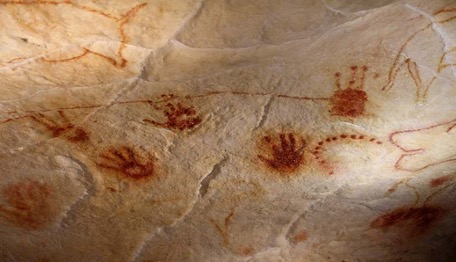
Positive space
the space that represents the main focus of a picture
15
New cards
Realism/naturalism
a style of representation that attempts to recreate the actual appearance of a subject
16
New cards
Idealism
A style of representation that attempts to modify the appearance of a subject to match a cultural standard or idea of beauty
17
New cards
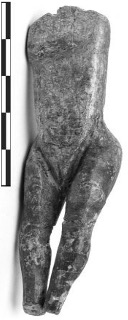
Venus Figure
name commonly (and erroneously) given to representations of the female body, often found in paleolithic contexts
18
New cards
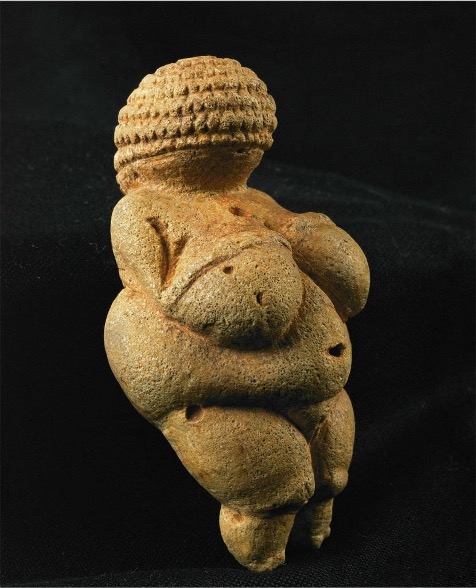
Sculpture in the round
a representational object carved in such a way that it is free-standing and can be seen on all sides
19
New cards
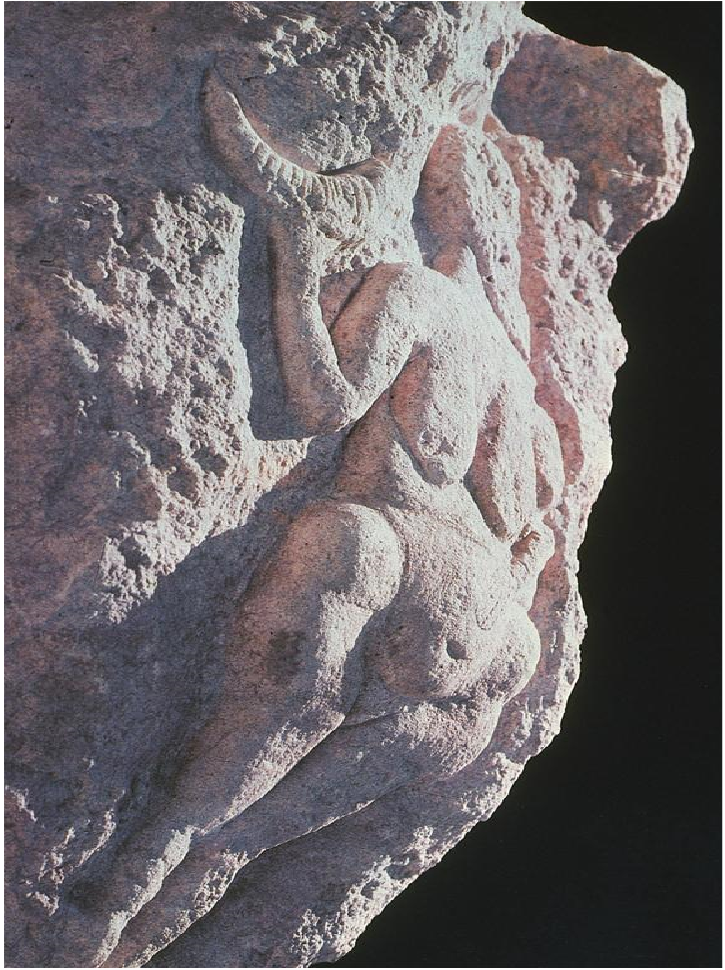
Relief sculpture
a representational object carved in such a way that it is remains attached to the material from which it is made
20
New cards
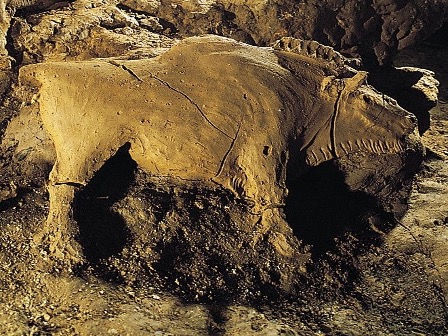
Additive technique (modeling)
a style of sculpting in which the features of an object are created by adding material
21
New cards
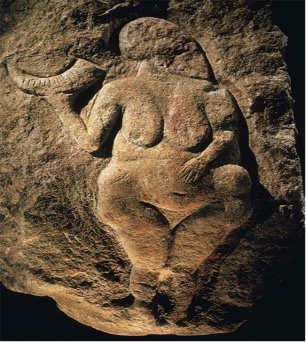
Subtractive technique (carving)
a style of sculpting in which the features of an object are created by removing material
22
New cards
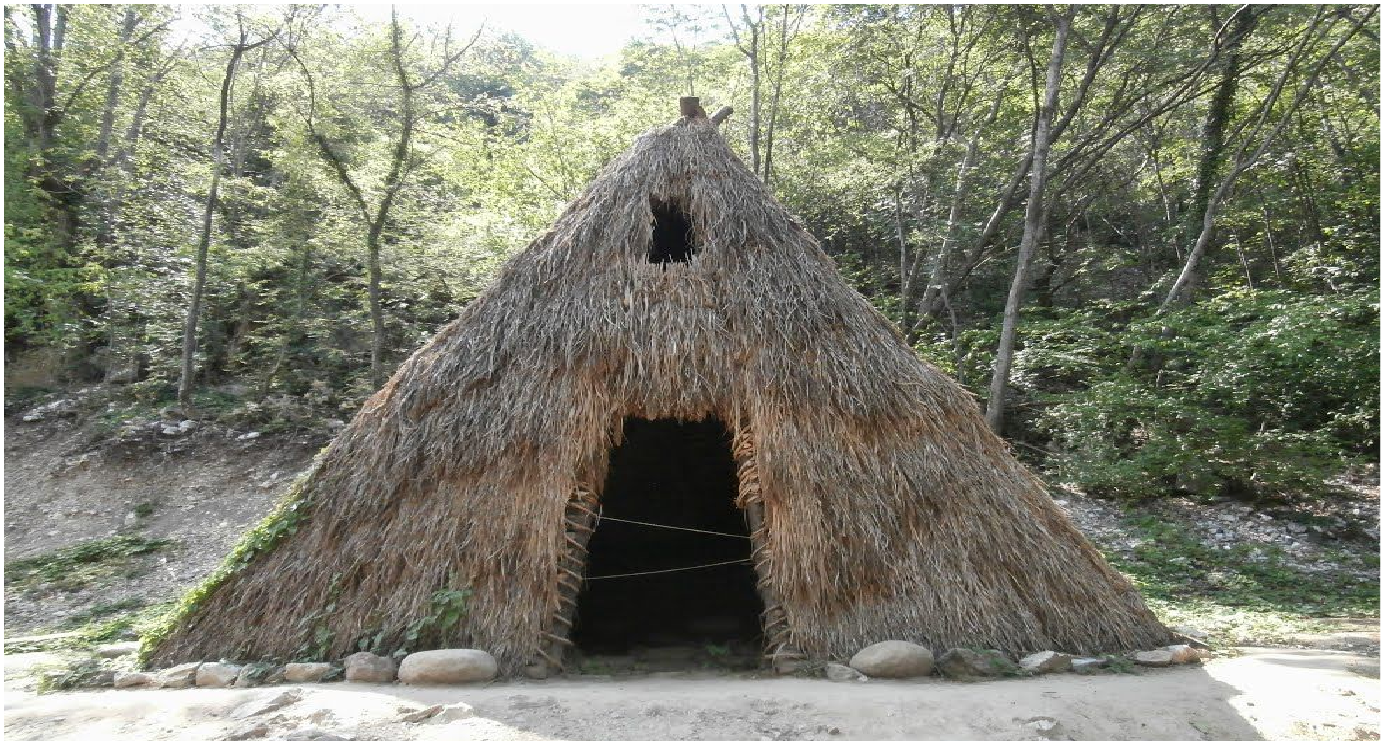
Sedentism
a change in behavioral patterns from more to less migratory movement of populations.
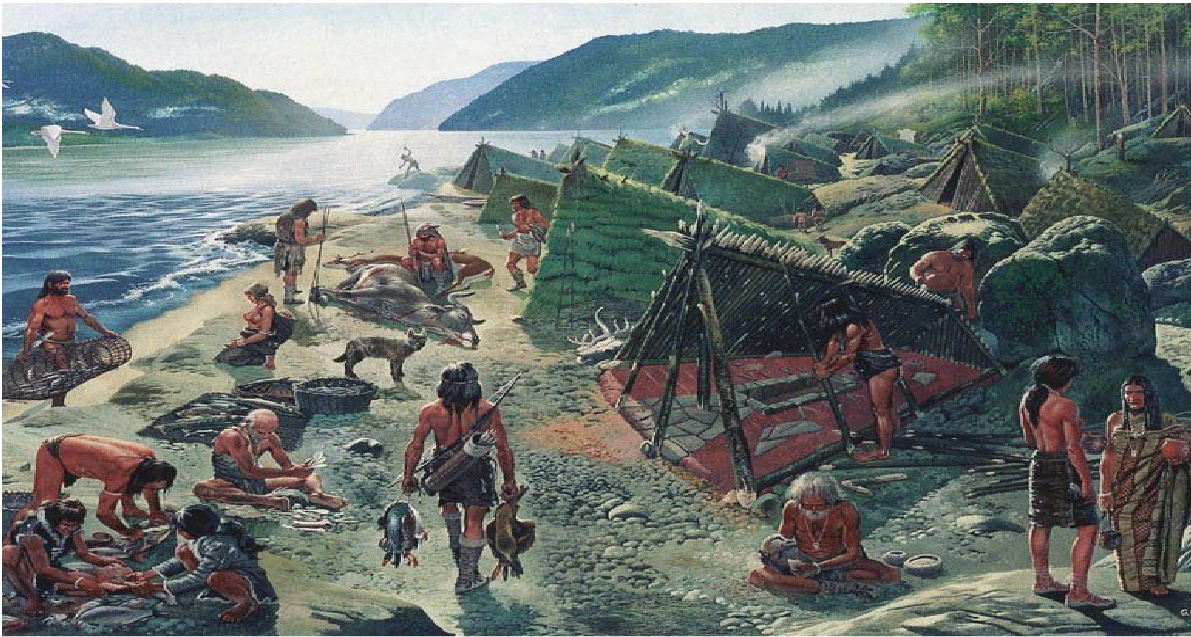
23
New cards
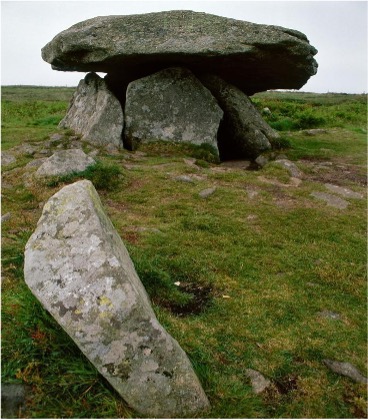
Megalithic
name given to prehistoric structures that are built from large stones.
24
New cards

Monolithic
name given to prehistoric structures that are built from one stone.
25
New cards
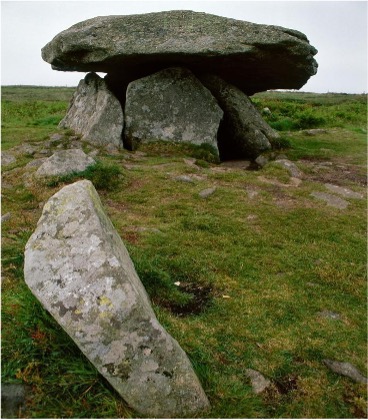
Dolmen
name given to prehistoric structures that are built a large flat stone set atop two or more upright stones.
26
New cards
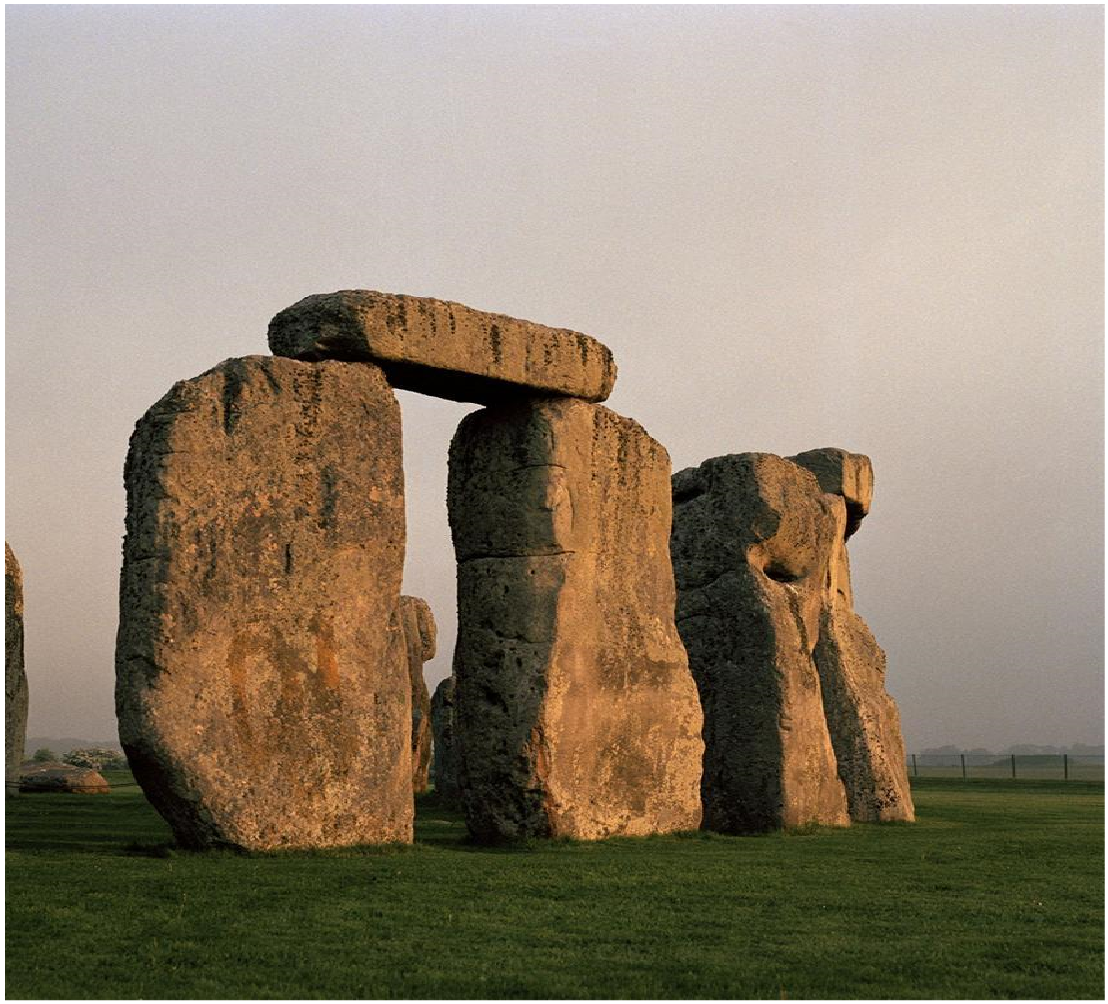
Post and lintel
form of construction was two or more vertical elements (posts) support a horizontal element (lintel).
27
New cards
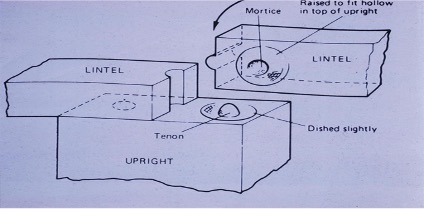
Mortise and Tenon
joining technique for two elements in which a projecting pin (tenon) in one element fits into a hole designed for it (mortice).
28
New cards
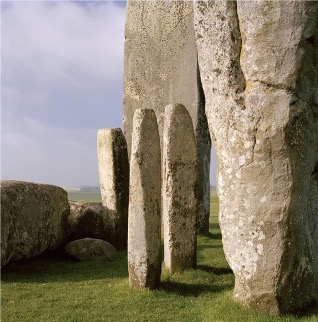
Bluestones
smaller stones
29
New cards
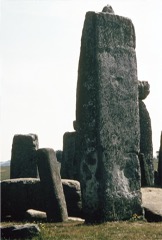
Sarsen Stones
big stones
30
New cards
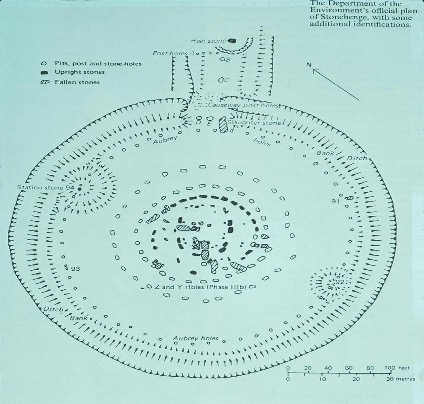
Henge
circular area enclosed by stones or wooden posts, set in place in the neolithic period.
31
New cards
Cairn
a pile of stones that serves as a burial site or a marker for a burial.
32
New cards
Passage grave
a type of prehistoric tomb beneath a cairn reached by a long narrow slab-lined passageway.
33
New cards
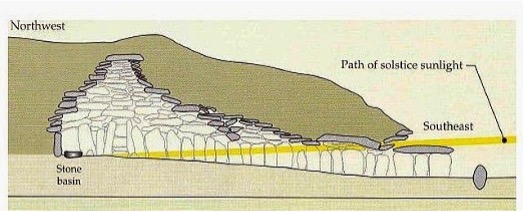
Corbeling
early roofing technique in which each layer / row of stone projects outward (or inward) from the layer upon which it rests. Corbeling is used to form arches and vaults.
34
New cards
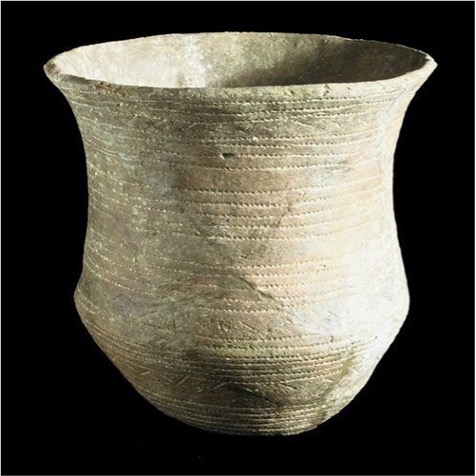
Ceramics
all types of objects made from fired clay, including pottery, porcelain and terracotta.
35
New cards
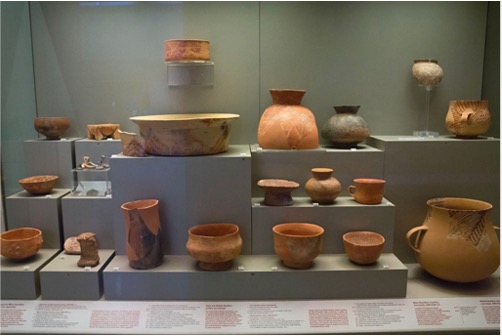
Earthenware
ceramics fired to 800-degree Celsius.
36
New cards
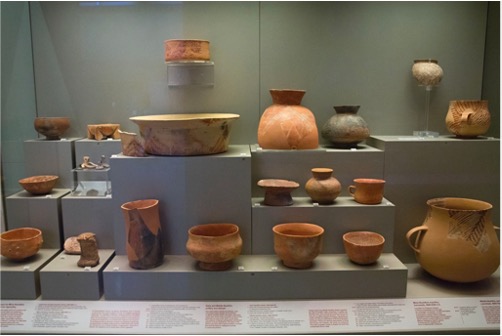
Stoneware
ceramics fired to 1200-degree c, which leads to vitrification.
37
New cards
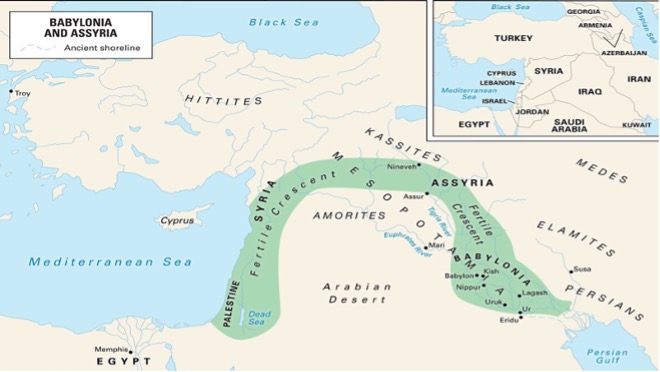
Mesopotamia
the place between the rivers. Region stretching from the Mediterranean to the Persian gulf that was extensively settled beginning in 4000-3000 BC.
38
New cards

Fertile crescent
arc shaped region that was settled near the end of the neolithic period due to its ability to support large scale agriculture.
39
New cards
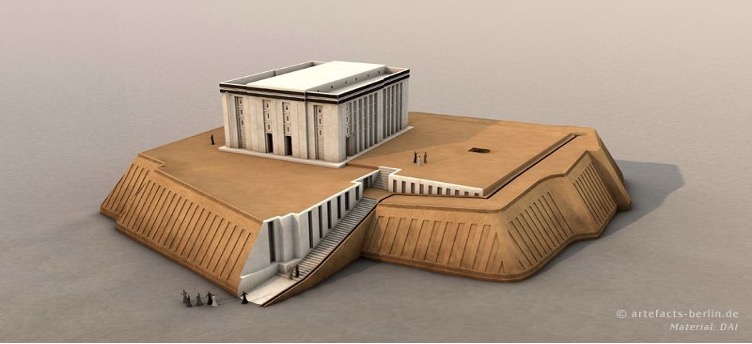
Ziggurat
a tall, stepped tower, commonly used in Mesopotamia to support a shrine.
40
New cards
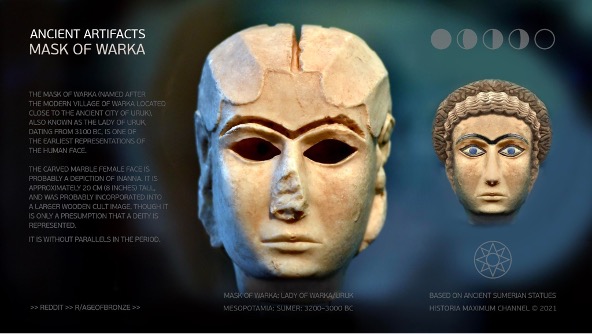
Inlay
form of surface decoration that involves setting one material into a shaped space in another.
41
New cards
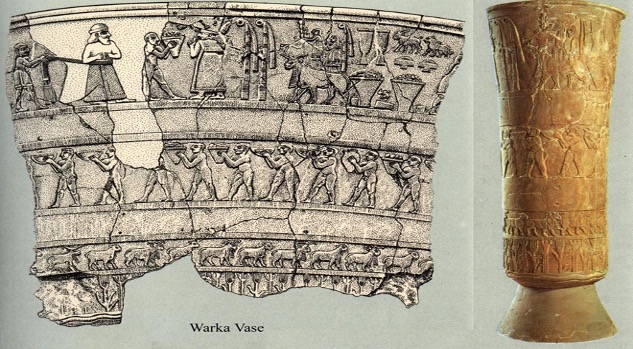
Register
a device used to arrange space representational images. In sculpture, this often takes the form of horizontal bands that serve as ground lines.
42
New cards
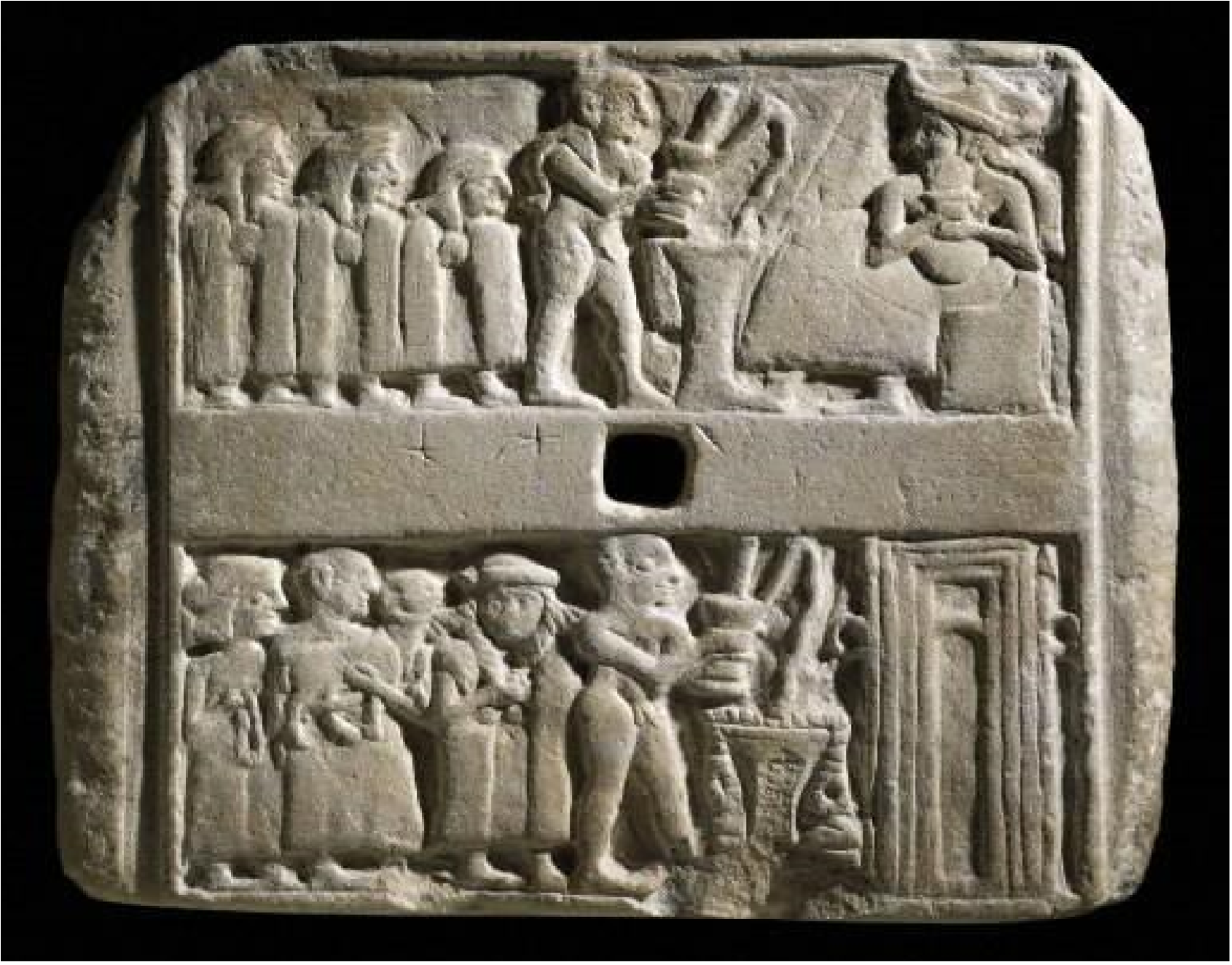
Hierarchical scale
an artistic convention by which the more important people are depicted larger than others.
43
New cards
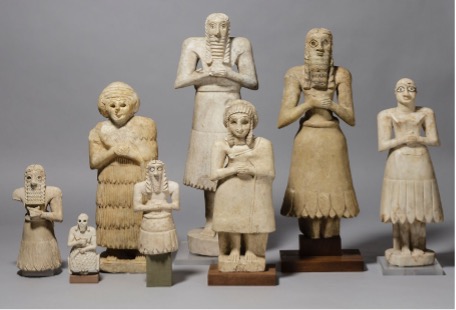
Polytheistic
Engaging in the practice of worshipping more than one god
44
New cards
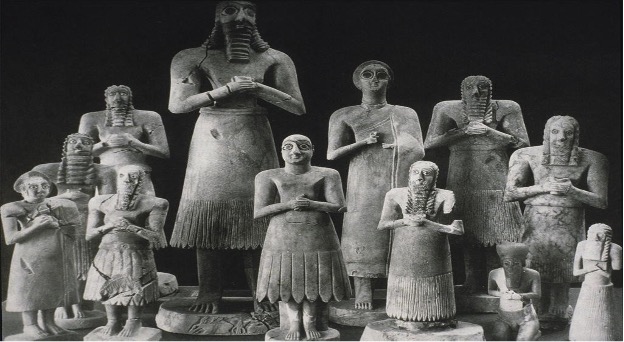
Votive Figure
unique form of representation that is dedicated to a god.
45
New cards
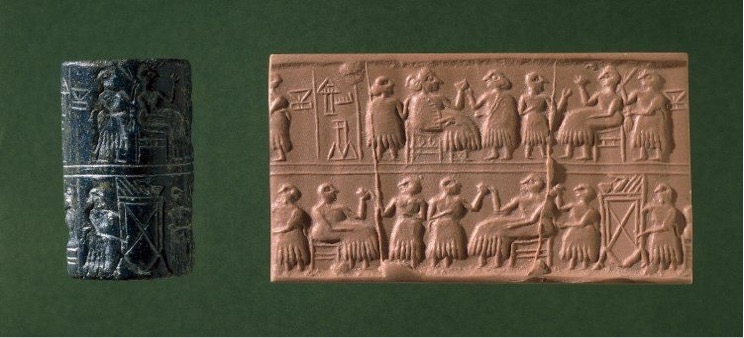
Cylinder seal
small cylindrical object with incised designs meant to form images when pressed into wet clay.
46
New cards
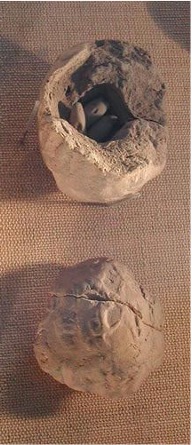
Bulla
an envelope-like container, made from clay to hold accounting tokens.
47
New cards
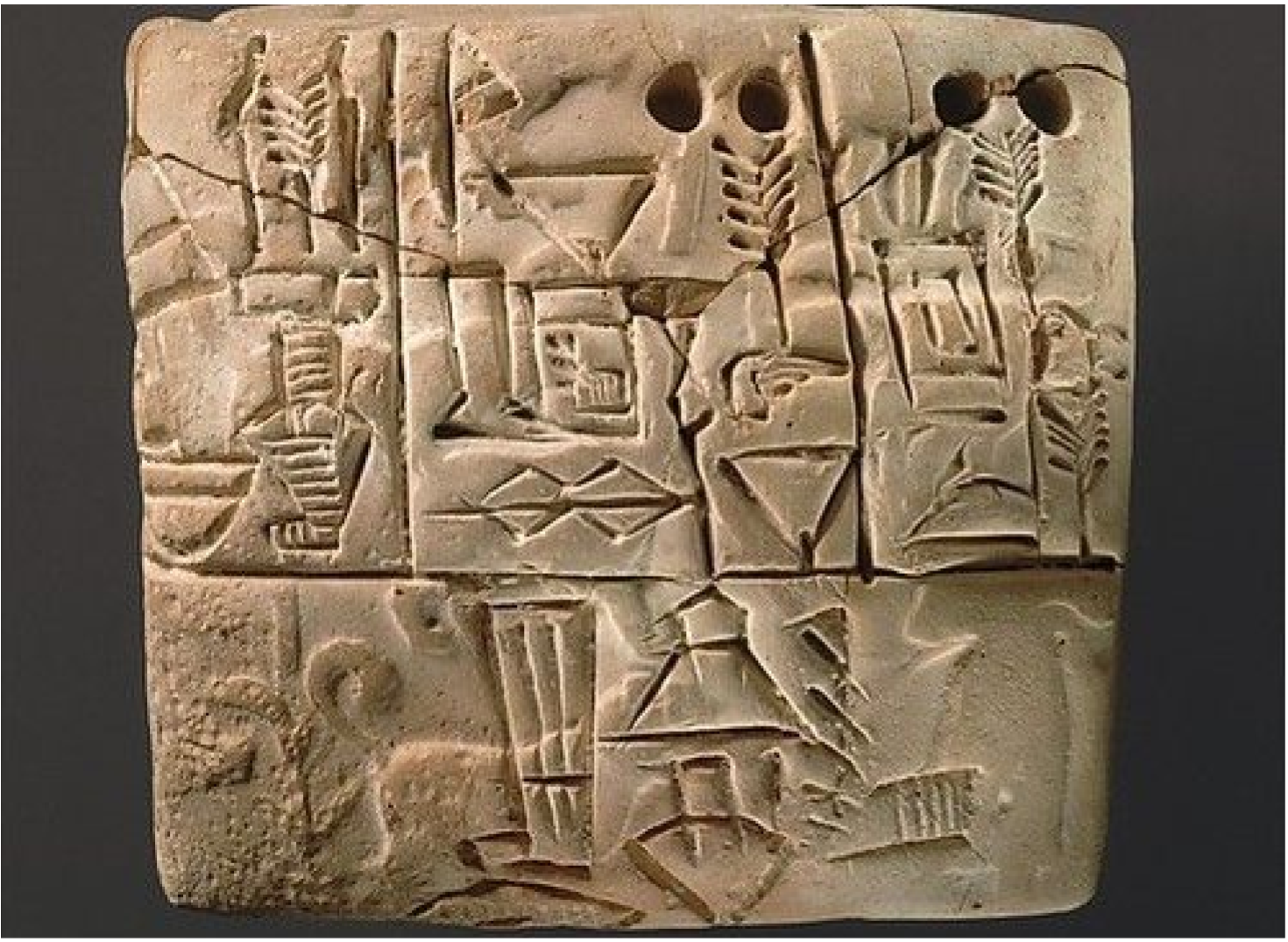
Pictograph
an image or symbol drawn to represent a word or concept.
48
New cards
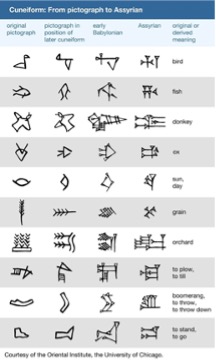
Cuneiform
latin expression meaning "wedge shaped" used to describe the writing system that develops in Mesopotamia around 3,000 BC.
49
New cards
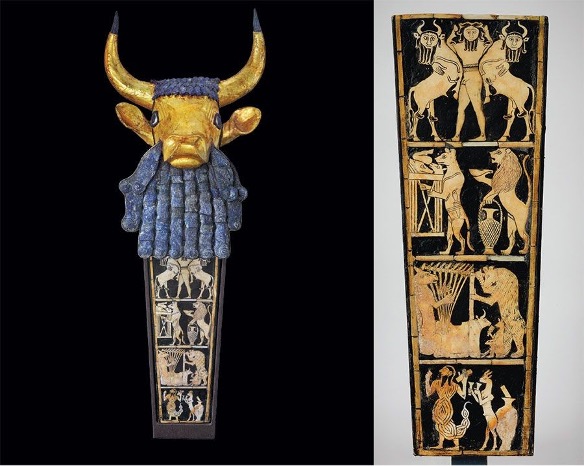
Lapis Lazuli
a rare, semi-precious stone, prized in antiquity for its deep blue color.
50
New cards
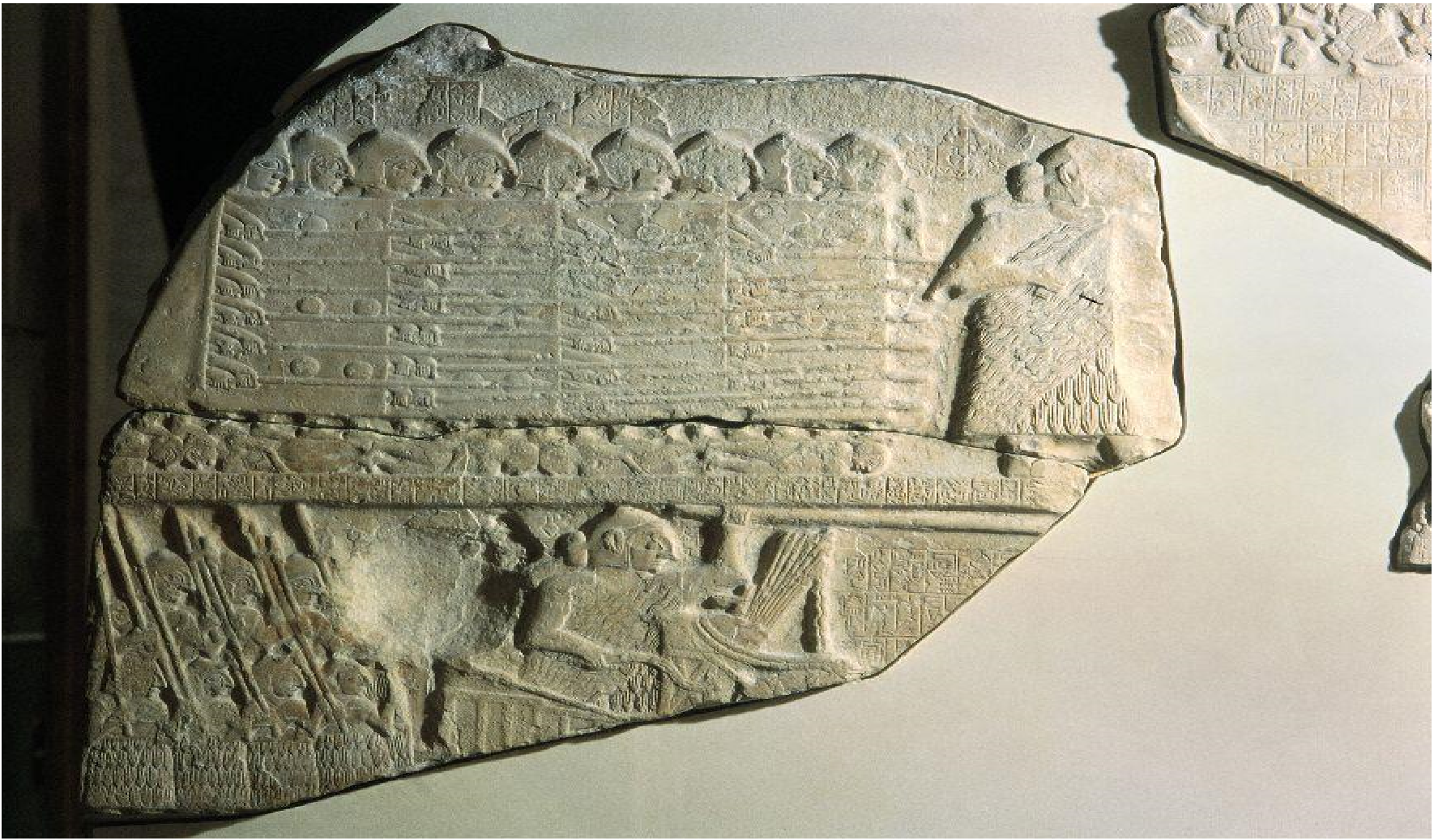
Stele
an upright stone slab or column typically bearing a commemorative inscription or relief design.
51
New cards
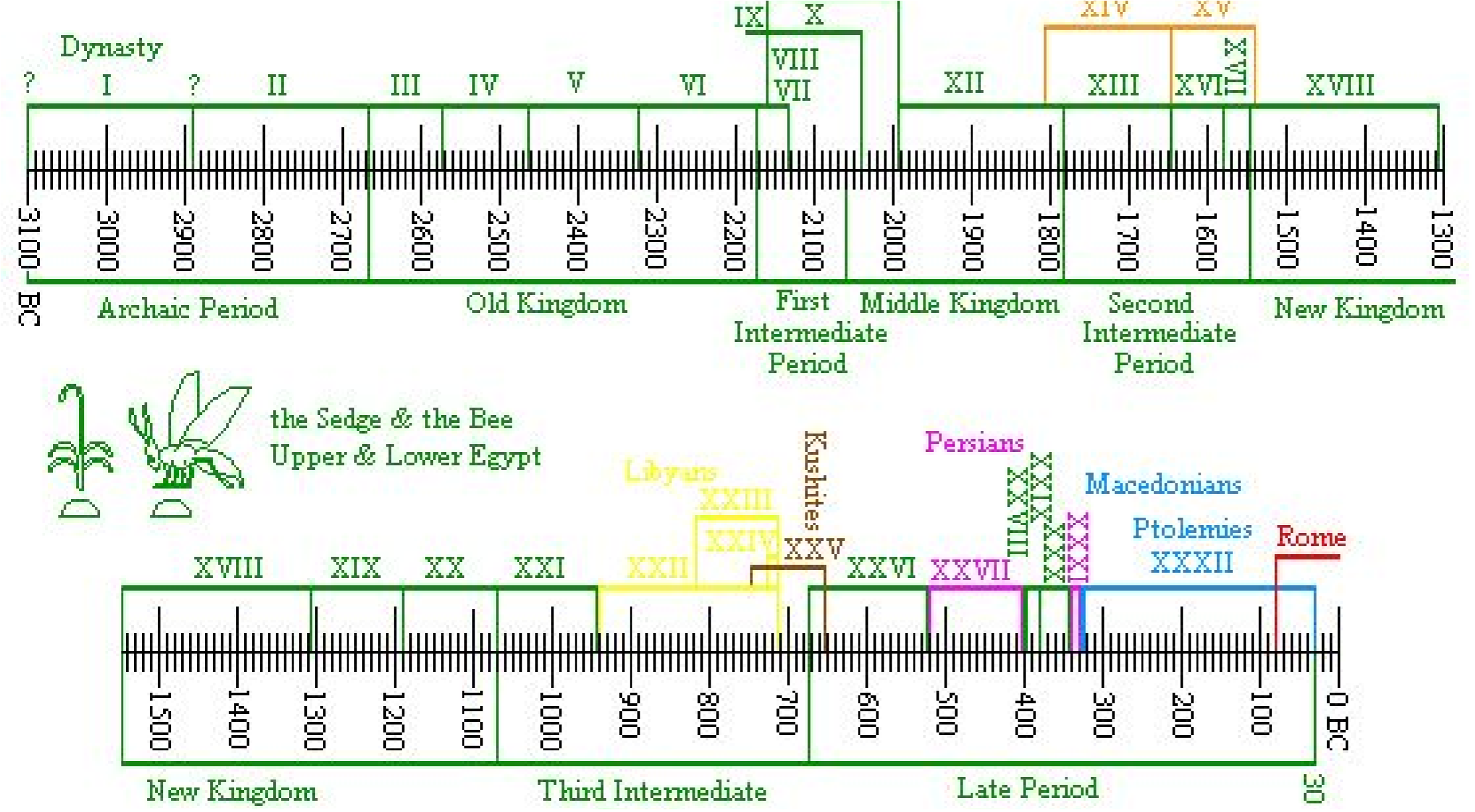
Kingdom
period of time in which upper and lower Egypt are under the rule of one king.
52
New cards
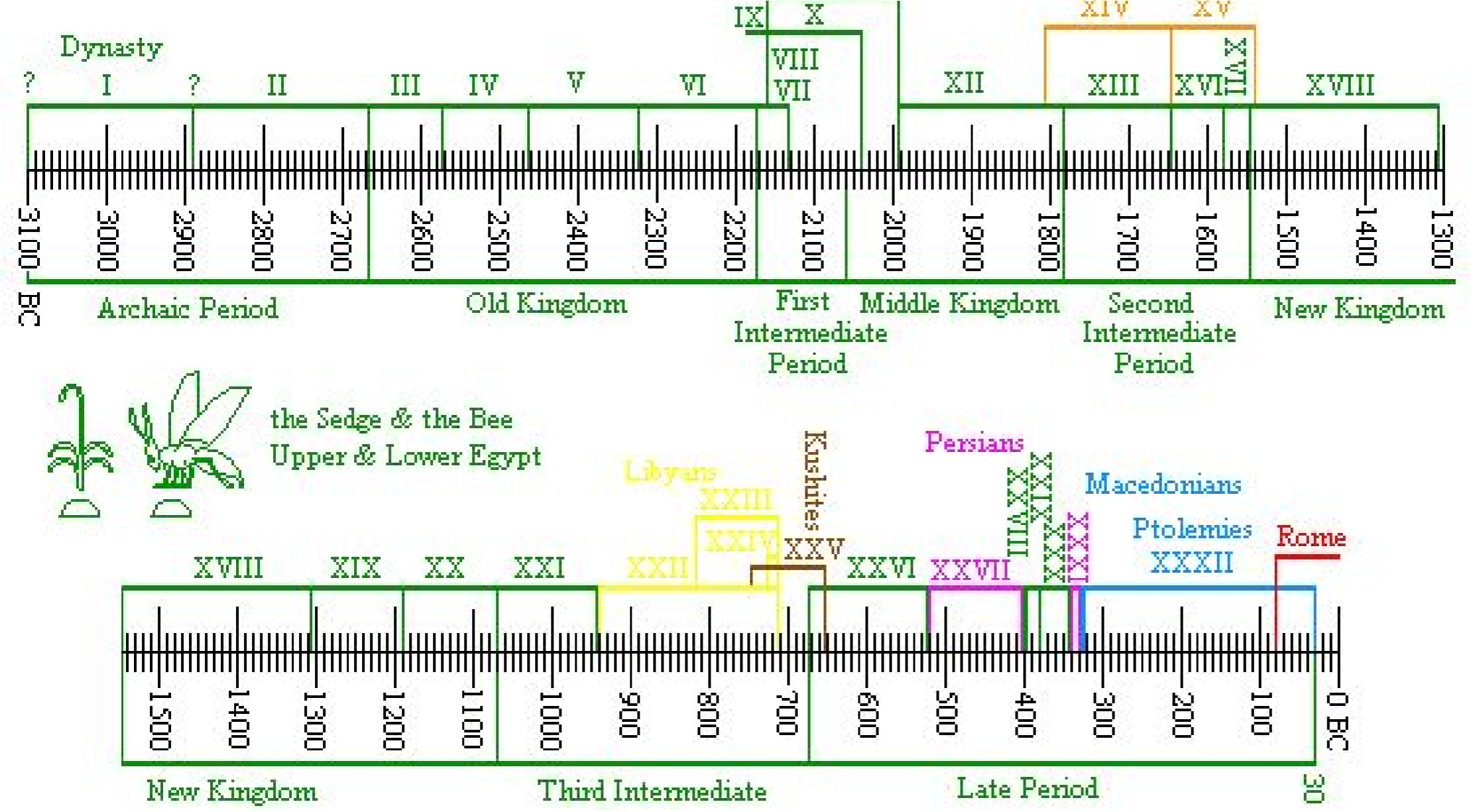
Intermediate period
time in which upper and lower Egypt are ruled separately.
53
New cards
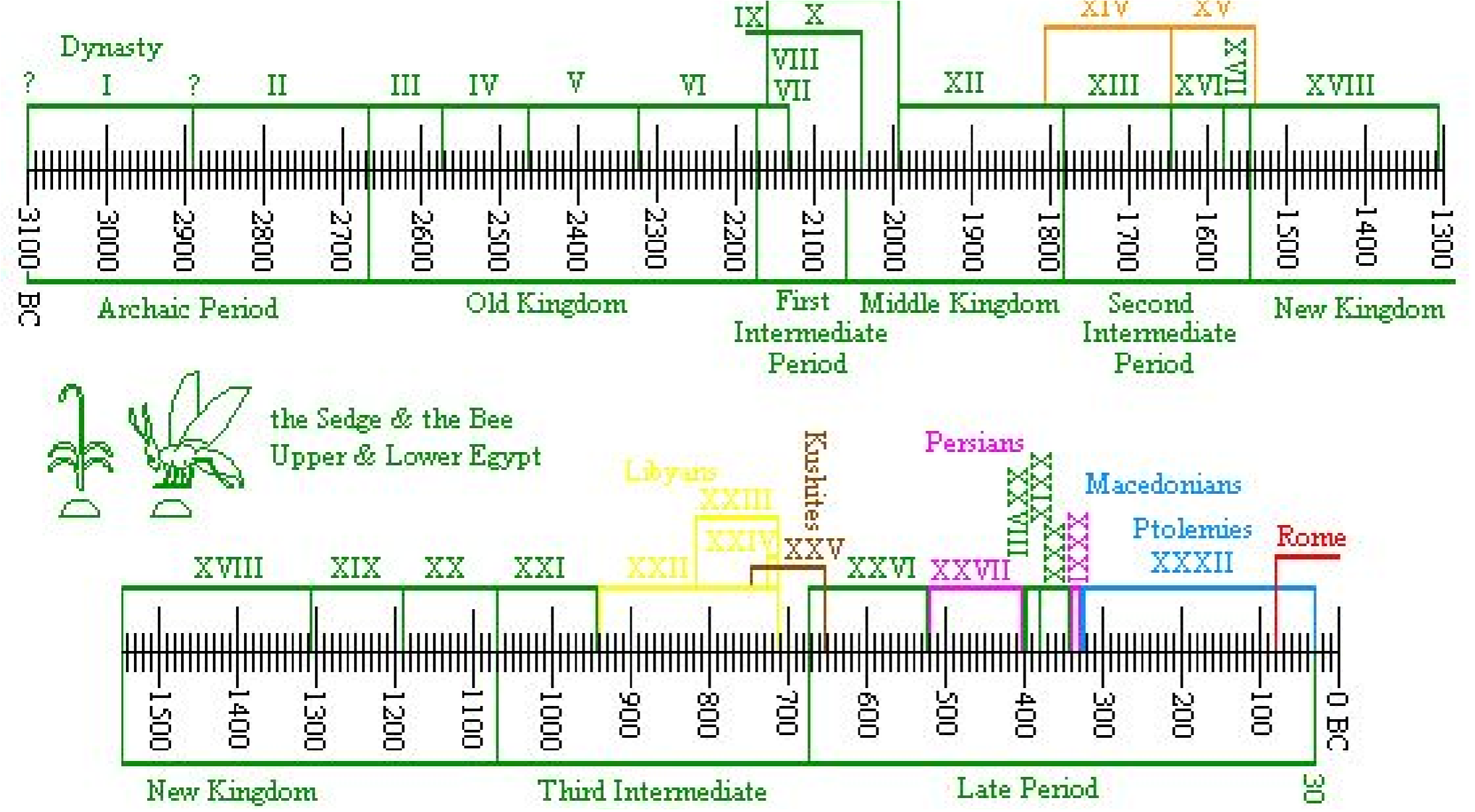
Dynasty
period of time in which a series of individuals rule in succession according to family relations or other type of arrangement.
54
New cards

King list
a method of record the passage of time according to the names of rulers.

55
New cards
Sema tawy
symbol representing the union of upper and lower Egypt.
56
New cards
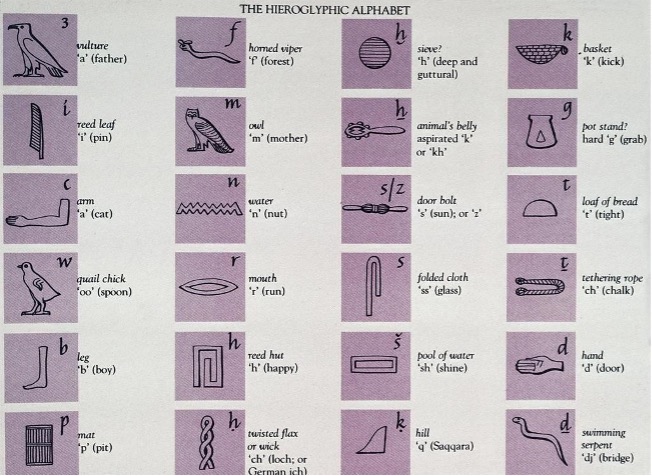
Hieroglyph
Greek word meaning sacred writing given to texts that appeared mainly in religious contexts.
57
New cards
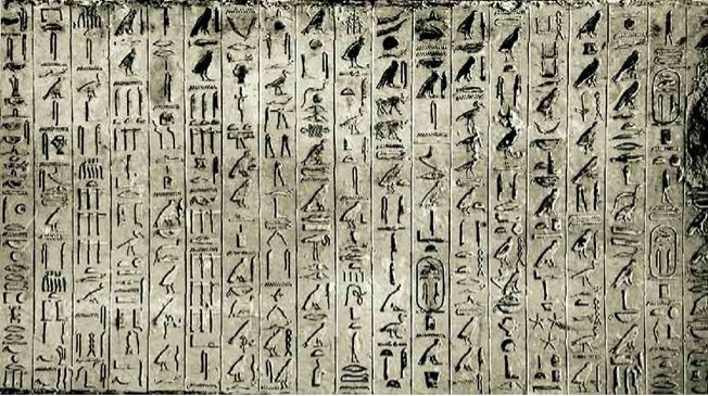
Demotic
Greek word meaning of the people given to texts used in day to day interactions.
58
New cards
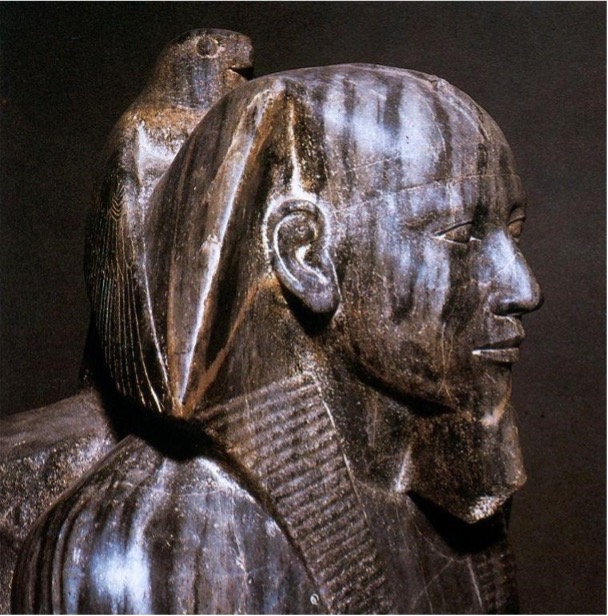
Nemes headdress
a linen garment that drapes over the shoulders, worn by Egyptian royals.
59
New cards
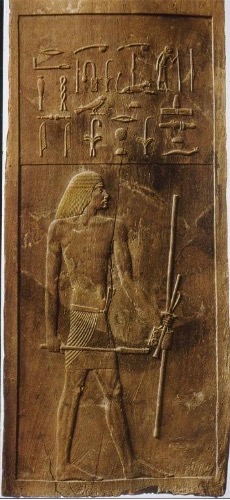
Canon of proportions
systematically ordered grid system governing the overall shape and size of the human figure in Egyptian art.
60
New cards
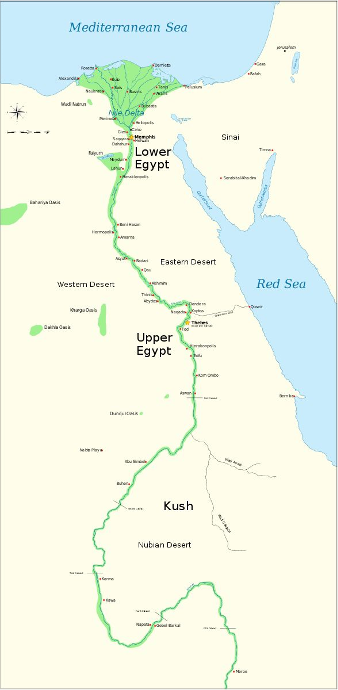
Necropolis
Greek expression, meaning "city of the dead." An area near a settlement reserved for monumental burial structures.
61
New cards
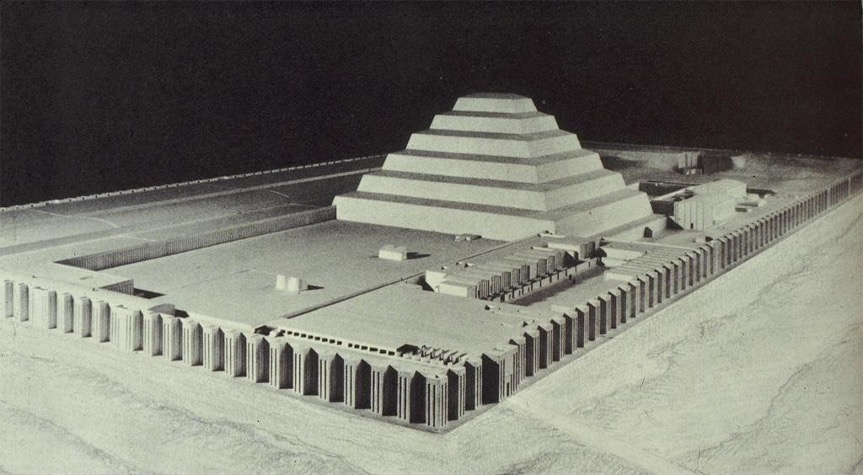
Step pyramid
a rare form of early dynastic burial which decreases in size from bottom to top in clearly defined levels.
62
New cards
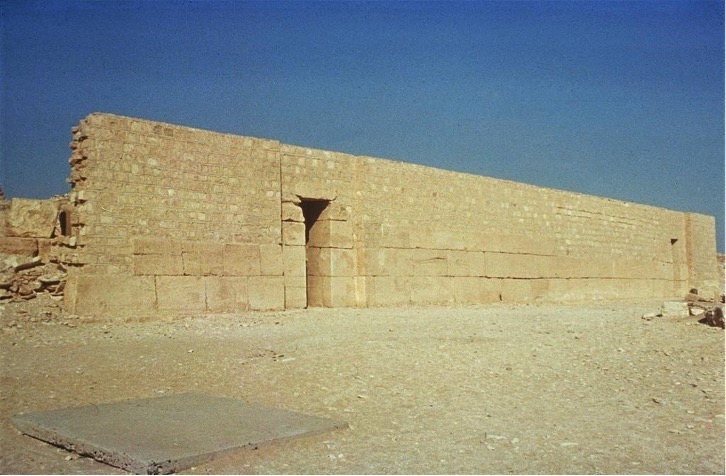
Mastaba
from the Arabic word for "bench," a flat topped, one-story structure with slanted walls built atop an Egyptian tomb.
63
New cards
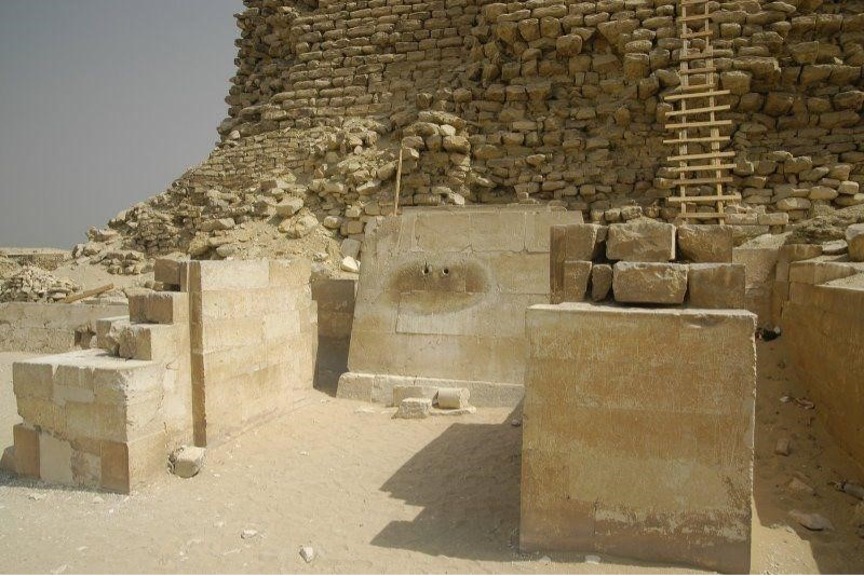
Serdab
a chamber associated with an Egyptian tomb, intended to hold a statue representation of the deceased individual, potentially allowing them to interact with the world of the living.
64
New cards
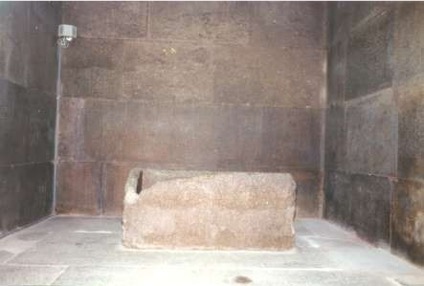
Sarcophagus
from the Greek word meaning "flesh eater," a container for a decrease's person, which is usually monument in nature.
65
New cards
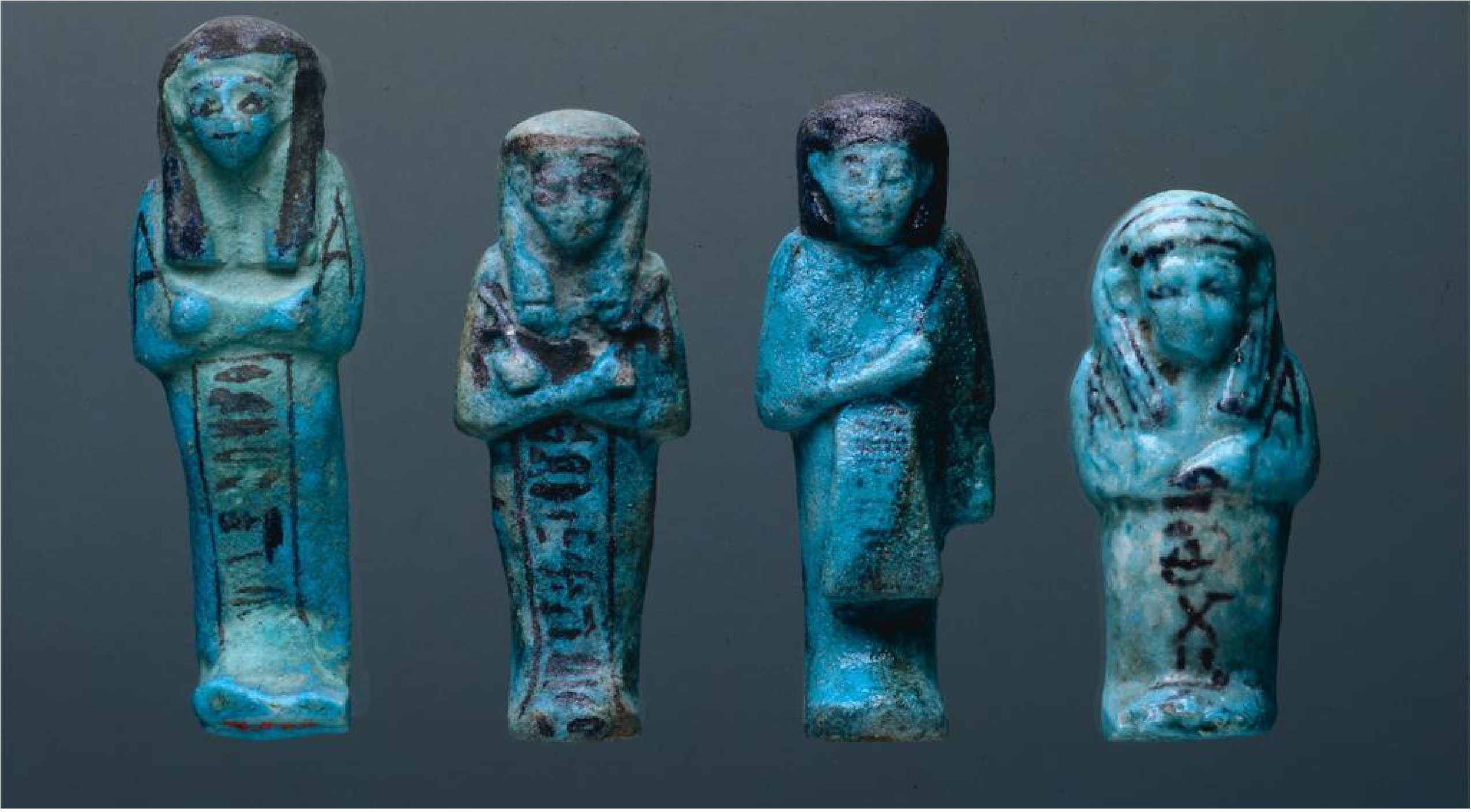
Faience
a quartz-ish form of ceramic that produces a glassy surface when fired.
66
New cards
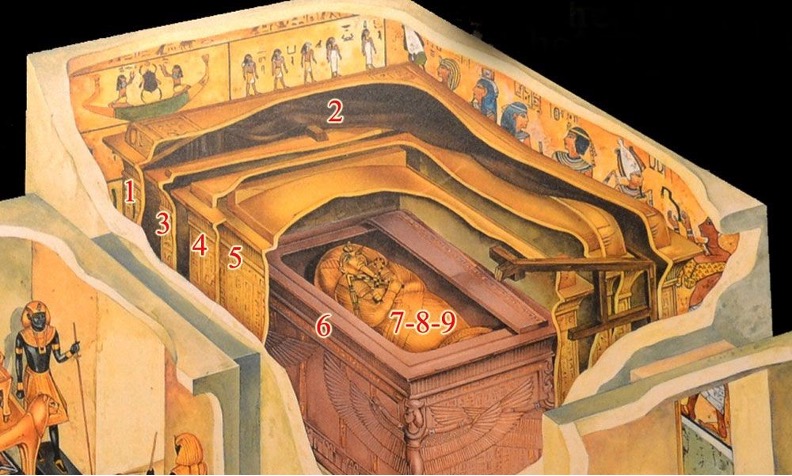
Shawbti
a figurine placed in a tomb to assist the deceased in the afterlife.
67
New cards
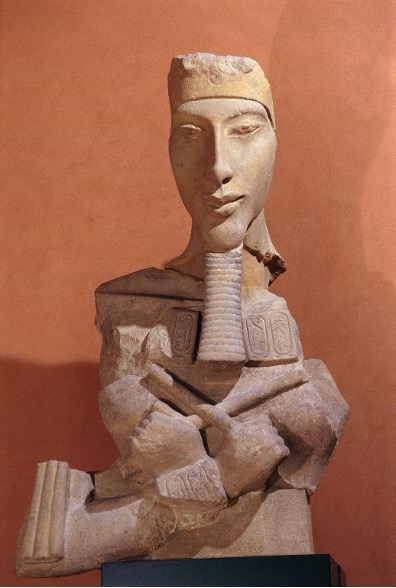
Amarna Style
Name commonly given to the unique representational style of sculpting / painting associated with the reign of Akhenaten. Derived from Tell al Amarna, the modern name for Akhetaten
68
New cards
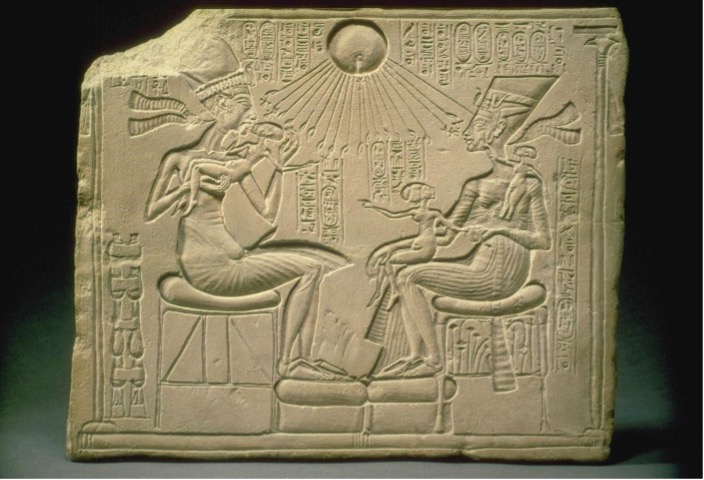
Aten
Name of the monotheistic deity worshipped in the reign of Akhenaten in the form of a sun disk.
69
New cards
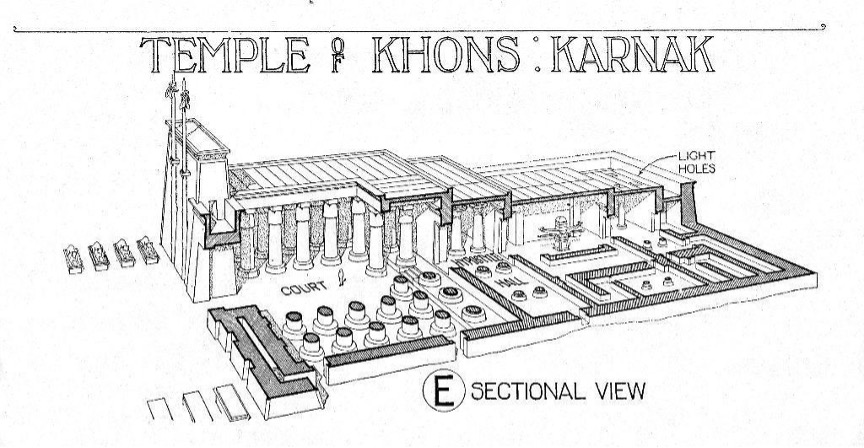
Hypostyle Hall
Term based on the Greek expression “columns beneath,” a room in which the roof structure is supported by columns, often closely spaced.
70
New cards
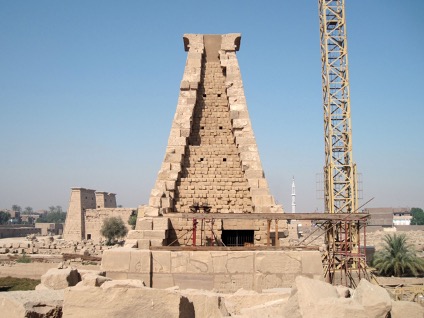
Pylon
Massive gateway into an Egyptian temple formed from two solid, tapering walls of oblong shape
71
New cards
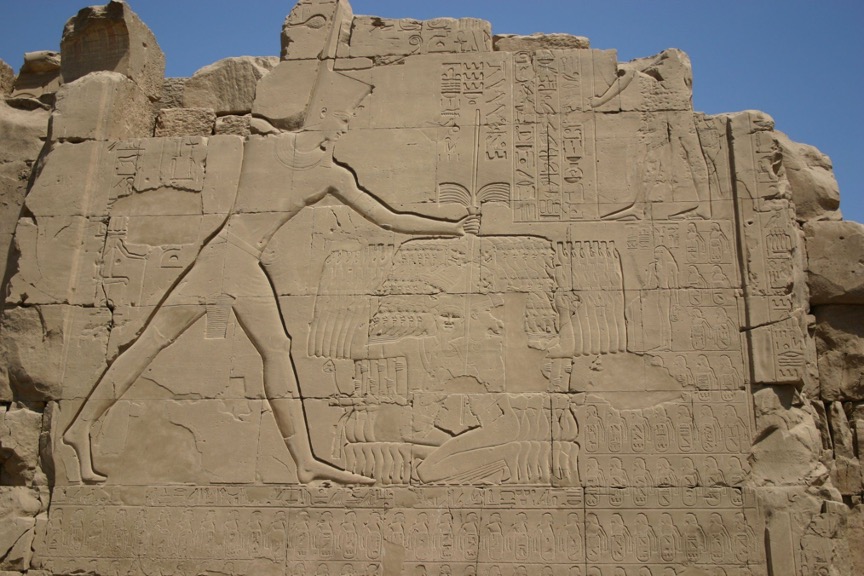
Sunken Relief
Form of relief sculpture in which the sculpted elements are carved into a silhouette of the overall shape of the figure leaving no part projecting from the flat background.
72
New cards
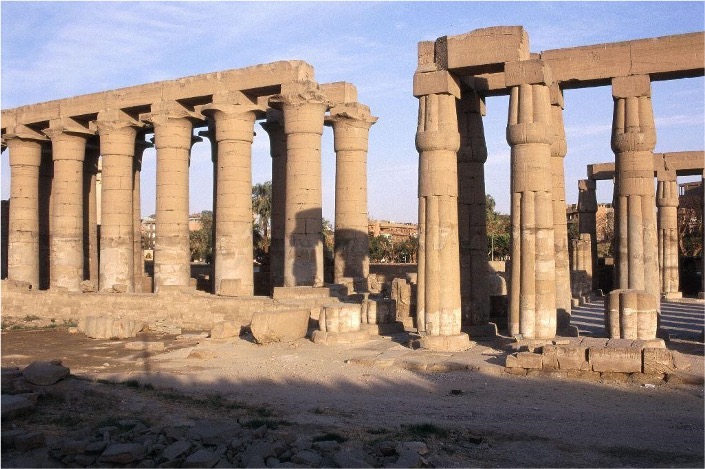
Clerestory
The topmost zone of a wall that is equipped with openings or windows in order to allow light and air into the building. These openings are often positioned above a raised central hallway.
73
New cards
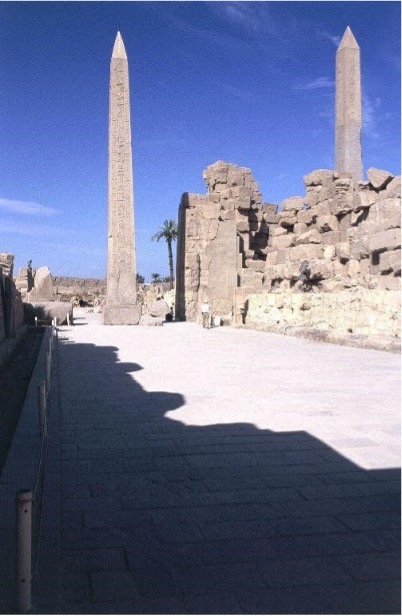
Obelisk
a stone pillar, typically having a square or rectangular cross section and a pyramidal top set up as a monument or landmark.